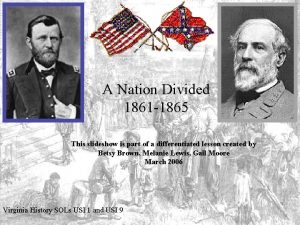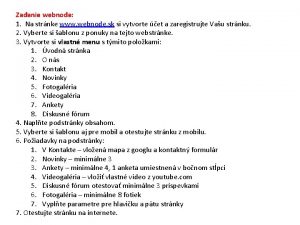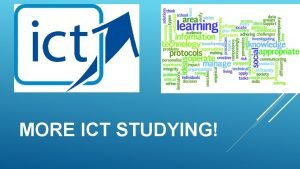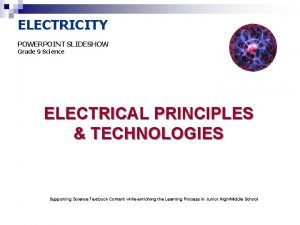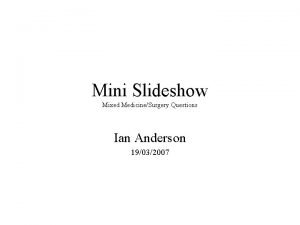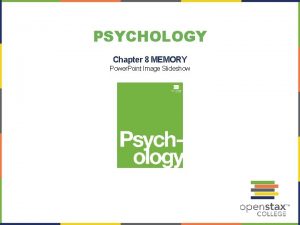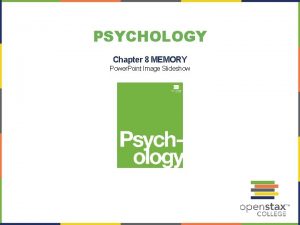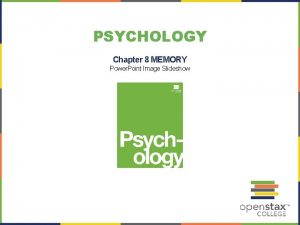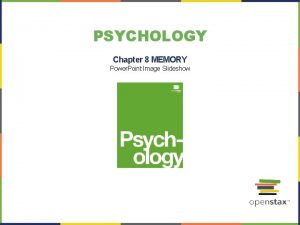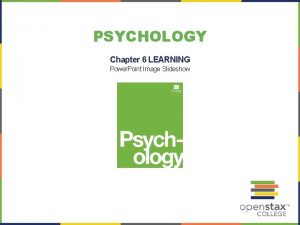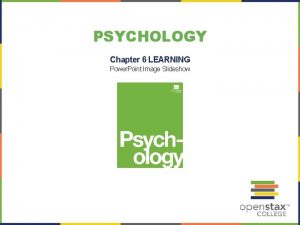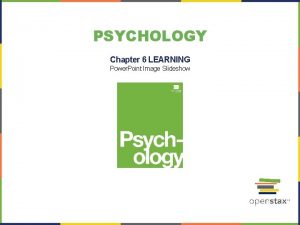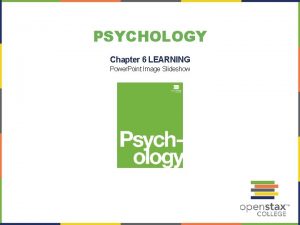PSYCHOLOGY Chapter 8 MEMORY Power Point Image Slideshow






















- Slides: 22

PSYCHOLOGY Chapter 8 MEMORY Power. Point Image Slideshow

FIGURE 8. 1 Photographs can trigger our memories and bring past experiences back to life. (credit: modification of work by Cory Zanker)

FIGURE 8. 2 Encoding involves the input of information into the memory system. Storage is the retention of the encoded information. Retrieval, or getting the information out of memory and back into awareness, is the third function.

FIGURE 8. 3 When you first learn new skills such as driving a car, you have to put forth effort and attention to encode information about how to start a car, how to brake, how to handle a turn, and so on. Once you know how to drive, you can encode additional information about this skill automatically. (credit: Robert Couse-Baker)

FIGURE 8. 4 According to the Atkinson-Shiffrin model of memory, information passes through three distinct stages in order for it to be stored in long-term memory.

FIGURE 8. 5 The Stroop effect describes why it is difficult for us to name a color when the word and the color of the word are different.

FIGURE 8. 6 Work through this series of numbers using the recall exercise explained above to determine the longest string of digits that you can store.

FIGURE 8. 7 There are two components of long-term memory: explicit and implicit. Explicit memory includes episodic and semantic memory. Implicit memory includes procedural memory and things learned through conditioning.

FIGURE 8. 8 Marilu Henner’s super autobiographical memory is known as hyperthymesia. (credit: Mark Richardson)

FIGURE 8. 9 The amygdala is involved in fear and fear memories. The hippocampus is associated with declarative and episodic memory as well as recognition memory. The cerebellum plays a role in processing procedural memories, such as how to play the piano. The prefrontal cortex appears to be involved in remembering semantic tasks.

FIGURE 8. 10 Most people can remember where they were when they first heard about the 9/11 terrorist attacks. This is an example of a flashbulb memory: a record of an atypical and unusual event that has very strong emotional associations. (credit: Michael Foran)

FIGURE 8. 11 This diagram illustrates the timeline of retrograde and anterograde amnesia. Memory problems that extend back in time before the injury and prevent retrieval of information previously stored in long-term memory are known as retrograde amnesia. Conversely, memory problems that extend forward in time from the point of injury and prevent the formation of new memories are called anterograde amnesia.

FIGURE 8. 12 In studying cases where DNA evidence has exonerated people from crimes, the Innocence Project discovered that eyewitness misidentification is the leading cause of wrongful convictions (Benjamin N. Cardozo School of Law, Yeshiva University, 2009).

FIGURE 8. 13 When people are asked leading questions about an event, their memory of the event may be altered. (credit a: modification of work by Rob Young)

FIGURE 8. 14 Can you tell which coin, (a) , (b) , (c) , or (d) is the accurate depiction of a US nickel? The correct answer is (c).

FIGURE 8. 15 The Ebbinghaus forgetting curve shows how quickly memory for new information decays.

FIGURE 8. 16 Blocking is also known as tip-of-thetongue (TOT) phenomenon. The memory is right there, but you can’t seem to recall it, just like not being able to remember the name of that very famous actor, Morgan Freeman. (credit: modification of work by D. Miller)

FIGURE 8. 17 Many veterans of military conflicts involuntarily recall unwanted, unpleasant memories. (credit: Department of Defense photo by U. S. Air Force Tech. Sgt. Michael R. Holzworth)

FIGURE 8. 18 Sometimes forgetting is caused by a failure to retrieve information. This can be due to interference, either retroactive or proactive.

FIGURE 8. 19 This is a knuckle mnemonic to help you remember the number of days in each month. Months with 31 days are represented by the protruding knuckles and shorter months fall in the spots between knuckles. (credit: modification of work by Cory Zanker)

FIGURE 8. 20 Memory techniques can be useful when studying for class. (credit: Barry Pousman)

This Power. Point file is copyright 2014 -2015, Rice University. All Rights Reserved.
 Short term memory in psychology
Short term memory in psychology Discerning true and false memories
Discerning true and false memories Power triangle
Power triangle Power bi training powerpoint
Power bi training powerpoint Point point power
Point point power Tommy's window slideshow prayer
Tommy's window slideshow prayer The tale of 3 trees
The tale of 3 trees Sabbath school powerpoint
Sabbath school powerpoint Naruto slidshow
Naruto slidshow Dust bowl slideshow
Dust bowl slideshow Multiplying negative and positive numbers
Multiplying negative and positive numbers Chapter 8 and 9 summary lord of the flies
Chapter 8 and 9 summary lord of the flies Fahrenheit 451 final project ideas
Fahrenheit 451 final project ideas Franck-condon principle lecture notes
Franck-condon principle lecture notes Slideshow
Slideshow Webnode stránky
Webnode stránky Probability slide
Probability slide Nackawic high school website
Nackawic high school website What term describes a slideshow that plays continuously?
What term describes a slideshow that plays continuously? Electricity power point
Electricity power point Jacob and esau slideshow
Jacob and esau slideshow Mini slideshow
Mini slideshow Martin luther king jr slideshow
Martin luther king jr slideshow














